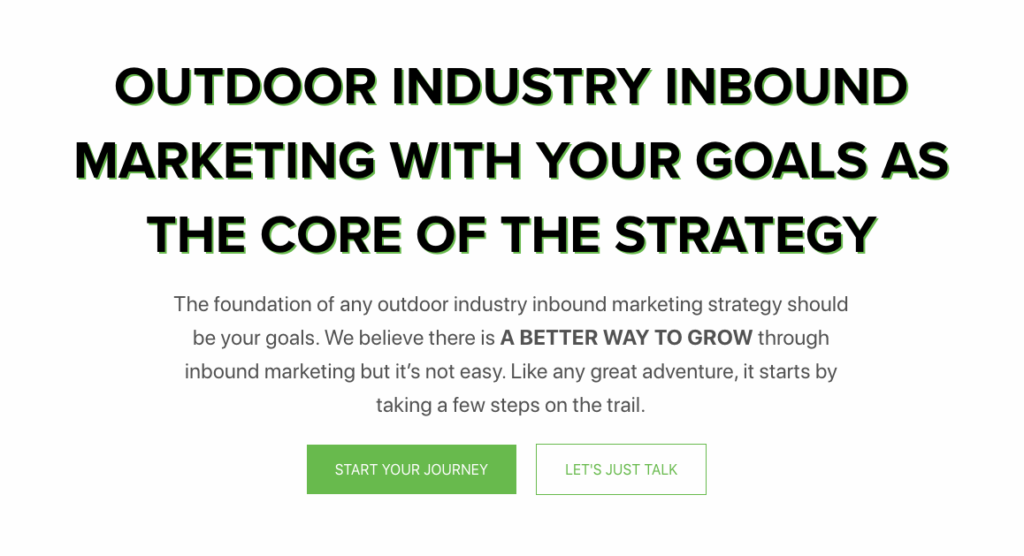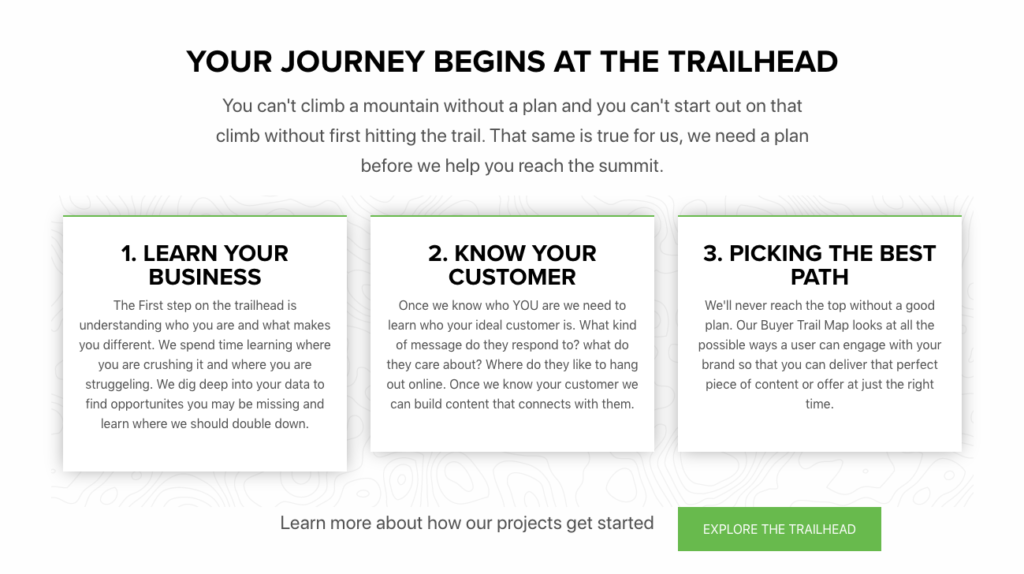3 Reasons Why Your Calls To Action Are Not Converting
Have you ever read through a blog post and left because no one “told” you what to do next? You were left hanging in space, free to leave at anytime. Leaving your visitors (prospects) hanging is the first simple way to NOT generate more leads. It’s important to have calls to action in every step of the sales funnel. If one directs you to a free educational download your focus should be on your messaging.
One essential element of any solid inbound marketing strategy includes visually-focused content that guides a visitor through the buyers journey. These important invitations to the next level are the job of a good “Call-to-Action”. Also commonly referred to as a CTA. Think of them as road signs, leading the way to the desired destination.
Here are some questions we receive for our clients:
- “I need a button for an email that directs my leads to a secondary form on my website. Is this possible?”
- “I’m having issues tracking the conversion rate of my new eBook offering. What am I doing wrong?”
- “Do we need a catalog of CTA’s for each stage of the inbound sales funnel?”
But first, where are the most important places to include a CTA? A CTA is, quite literally, a hyperlinked button, that guides your reader to take a desired next step.
A CTA acts as a link between exploratory content that your prospect is interested in and premium content offers that can only be accessed by providing personal information. Think of a time where you read the summary of a blog post. If you’re interested in finding out what the article examines, you simply choose the “Read More” button at the bottom. If they don’t turn into leads now, they’re more likely to come back if they see your website as insightful.
Here are a few ideas about why your CTAs may not be getting the responses you hoped for.
1. Target Your Buyer Persona
Tailored messaging delivered at precise moments during the buyer’s journey through clickable CTAs will resonate with your leads. The more you know about your visitors, the more segmented your content will be in the future.
Your CTA messaging should have a direct impact on someone’s willingness to click and move further down the buyer’s journey. Because your buyer personas have key identifiers attached to each step of the journey, instead of using the usual “Learn More” CTAs you can get a little more creative with your messaging such as “Check It Out.”
It would be a big mistake to send content to prospects with impromptu CTA messaging that was developed for evangelists.

If the content that comes ahead of your CTA is not informative or bland, even the world’s best CTA is going to have low conversions.
Leaving you with that gut-wrenching feeling of failure. If a visitor clicks your CTA, they should have a general sense of who you are, how you can help address their specific needs and what information they need to begin the sales process. The CTA reinforces the action they’re about to take towards achieving a solution to their problem.
2. Don’t Sell All The Time
Your goal as a business owner should be to provide educational information that is useful to your industry, not just flat-out selling your products and services. You do not want to overwhelm your leads or customers with forceful selling. Your calls to action should be inviting and succinct and address problems that your targeted buyer persona’s express along their buyer’s journey.
CTAs are not the place to begin a dialogue with your leads or prospects. It is however, the place for prospects to begin the buyer journey. Remember, we develop our CTAs based on buyer persona research.
However, the research you conducted should give a clear indication of how your prospects communicate and take action in their daily lives. If it doesn’t, you need to start over and re-evaluate.
3. Let Your Calls To Action Create Urgency
Guiding your leads naturally should be your top priority. Internet researchers are very indecisive while browsing for solutions. That’s bad news, because the longer a buyer sits and analyzes, the more openings arise for your competitors to steal your leads. Your content needs to nurture the lead to act immediately or at a later date.

The internet is one big library of anything you might want. As a result, it becomes more difficult to decide if you’re finding the best solution to your problem. Be the clear answer to their challenge, and make them want to choose you.
For instance, Amazon does a great job in converting leads into die-hard customers and eventually brand evangelists. We’ve all purchased products through Amazon, and they already know that we’re not interested in receiving deals on products we never buy. Instead they send detailed newsletters of items purchased in the past, with clear calls to action attached to each call out. They go the extra mile in making the message actionable.
Phrases such as “View our product line” and the powerful “1-Click Ordering” CTA can be seen all over their site and email campaigns. Because Amazon has nailed down their target audience and how they shop, the focus has shifted from carrying influential brands to the messaging that will resonate with the lead and convert them to customers.
These principles have already been deployed in the B2B world. And they still continue to work.
Because our clients know their customers will receive the right information at the right time, in each step of the buyer’s journey. We accomplish this by using effective calls to action messaging that is developed for your buyer personas. Using general messaging might bring in a lot of leads. But it’s very concerning to find out more than 90% of those leads had a minimal impact on your sales. The right compelling messages help to eliminate that concern.
If you’re interested in learning more about Call-to-Actions and upping your inbound marketing game, take a look at the Sage Lion Media inbound marketing blog.

